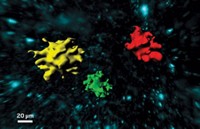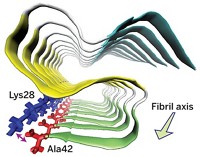Advertisement
Grab your lab coat. Let's get started
Welcome!
Welcome!
Create an account below to get 6 C&EN articles per month, receive newsletters and more - all free.
It seems this is your first time logging in online. Please enter the following information to continue.
As an ACS member you automatically get access to this site. All we need is few more details to create your reading experience.
Not you? Sign in with a different account.
Not you? Sign in with a different account.
ERROR 1
ERROR 1
ERROR 2
ERROR 2
ERROR 2
ERROR 2
ERROR 2
Password and Confirm password must match.
If you have an ACS member number, please enter it here so we can link this account to your membership. (optional)
ERROR 2
ACS values your privacy. By submitting your information, you are gaining access to C&EN and subscribing to our weekly newsletter. We use the information you provide to make your reading experience better, and we will never sell your data to third party members.
Biological Chemistry
In Search Of Misfolded Proteins
Clinical Diagnostics: New method could detect early stages of diseases such as Alzheimer's and type 2 diabetes
by Laura Cassiday
April 25, 2011
| A version of this story appeared in
Volume 89, Issue 18

Clumps of misfolded proteins accumulate in the tissues of patients often before they know that they're ill with certain diseases, such as Alzheimer's, Parkinson's, and type 2 diabetes. Now researchers have developed an assay to detect small, soluble aggregates of misfolded proteins that form at early stages of disease (Biochemistry, DOI: 10.1021/bi200215j). The technique could enable earlier diagnosis as well as enhance scientists' understanding of misfolded-protein disorders, the researchers say.
Clumps form when proteins, such as amyloid-β in Alzheimer's disease or α-synuclein in Parkinson's, don't fold correctly and then stack together to form structures known as cross-β sheets. If enough proteins accumulate, they produce insoluble bundles called amyloid fibrils.
Although scientists once blamed amyloid fibrils for disease development, many now believe that these large protein aggregates form relatively late in the course of disease. "Over the past 10 years, it's become apparent that smaller, soluble aggregates are actually more toxic than the amyloid deposits," says Joseph Fedynyshyn, a scientist at Novartis Vaccines and Diagnostics, in Emeryville, CA. The small aggregates likely form before a patient experiences symptoms, he says.
At late stages of disease, pathologists can use special dyes to stain amyloid fibers in tissue samples. But doctors have had no way to detect smaller, soluble aggregates at early stages of disease, when therapies are more likely to be effective. So Fedynyshyn, Cleo Salisbury, and their colleagues wanted to develop a reagent that could recognize a common feature in many amyloid-forming proteins.
The team had previously discovered that a positively charged peptide derived from a human prion—a protein that, when misfolded, causes Creutzfeldt-Jakob disease—interacts with the misfolded form of the prion but not with the properly folded form. To see whether the peptide also interacts with other misfolded proteins, the researchers modified the peptide's chemical backbone to increase its stability, and then attached it to paramagnetic beads. They found that a variety of misfolded proteins, including α-synuclein and amyloid-β, could bind to these bead-peptide complexes, which the researchers could isolate with a magnet. They removed the bound proteins from the beads and detected them with specific antibodies. The investigators think that the positively charged peptide binds to a negatively charged "stripe" common to the structures of misfolded-protein aggregates.
The researchers next tested whether their peptide-coated beads could detect aggregates in a more clinical context. They added various sizes of misfolded amyloid-β aggregates to human cerebrospinal fluid and used the beads to purify the aggregates. The method was sensitive enough to detect all aggregate sizes, including the smallest amyloid-β aggregate tested, which contained 12 to 16 protein monomers and is toxic to neurons in patients with Alzheimer's disease.
The researchers have already used the technique to detect misfolded protein aggregates in cerebrospinal fluid from Alzheimer's patients (PLoS One, DOI:10.1371/journal.pone.0015725). They now plan to test the diagnostic usefulness of the assay in larger groups of patients with Alzheimer's and other diseases.
Adriano Aguzzi, a neuropathologist at the University Hospital Zurich predicts that the reagent will prove useful for diagnosing multiple misfolded-protein diseases. He also says that because this peptide interacts with many types of aggregates, the "study highlights the similarities among prions and other protein-misfolding diseases."




Join the conversation
Contact the reporter
Submit a Letter to the Editor for publication
Engage with us on Twitter